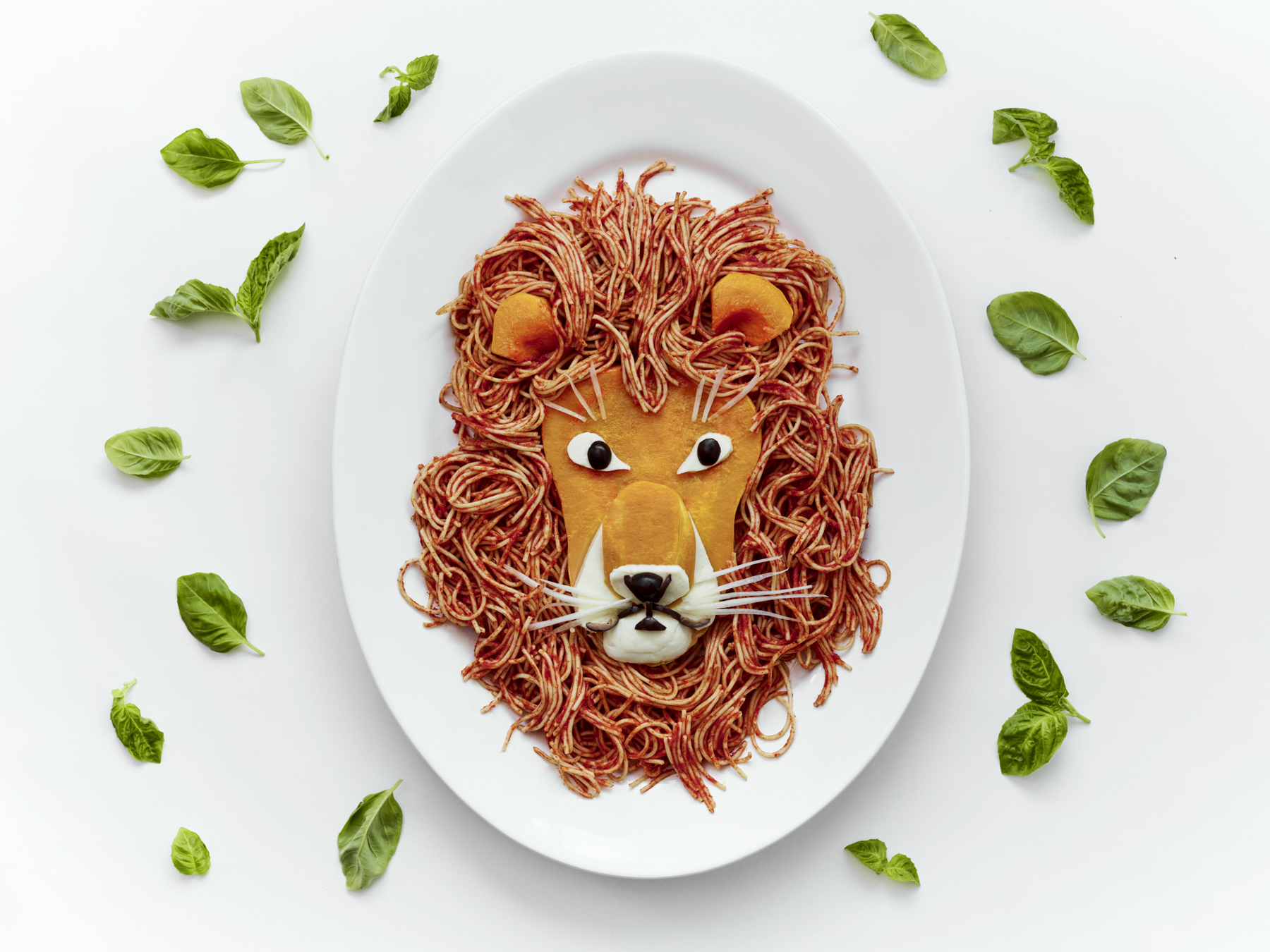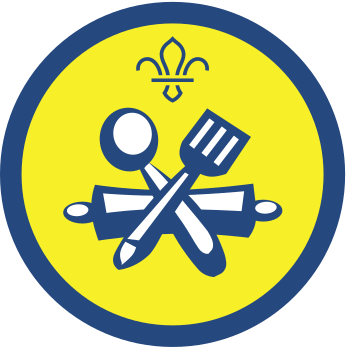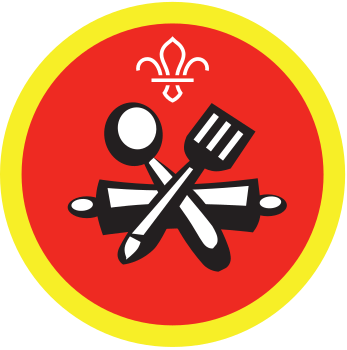
Make Disney Simba inspired spaghetti and squash
You’ll need
- See ingredients list
- Baking sheet
- Parchment paper
- Large sauce pot
- Large pot
- Chopping boards
- Knives
- Plates for each person
- Serving spoons
- Knives and forks
- Heatproof gloves
- First aid kit (including for burns)
- Way to extinguish a fire, such as fire extinguisher or fire blanket
Before you begin
- Use the safety checklist to help you plan and risk assess your activity. There's also more guidance to help you carry out your risk assessment, including examples.
- Make sure all young people and adults involved in the activity know how to take part safely.
- Make sure you’ll have enough adult helpers. You may need some parents and carers to help if you’re short on helpers.
Planning and setting up the activity
- Remember to give a safety briefing for the cooking equipment and methods you’re using. You may wish to demonstrate the methods or activity before you all start cooking.
- An adult should cook the spaghetti and squash for this recipe. Make sure the food is fully cooked and cooled before serving it to young people, following good food safety and hygiene practices.
- While people are cooking the spaghetti and squash, another responsible adult could play a calming game, read a book or run a colouring activity away from the cooking area. Make sure everyone is safely supervised by adults and always follow the Yellow Card.
- Check for allergies, eating problems, fasting or dietary requirements and adjust the recipe as needed. This may include making sure there’s no cross-contamination during food preparation, storage, cooking and serving too.
- Check if there are any items of food (or packaging) that people can’t touch or be near to or if there are items that people might not be comfortable using in the activity.
- Some people may not like certain food textures or tastes and that’s OK. Try to find an alternative for them. No-one has to use all the ingredients or be made to try foods if they’re not happy, comfortable or don’t want to.
- Remember to have a hand washing station and take extra hygiene precautions when handling food.
- Take a look at our guidance on food preparation.
- Make sure you have all the ingredients ready.
- You may want to run a kitchen safety talk and show people how to use the equipment safely, such as for cooking or chopping ingredients. You could run our kitchen safety and hygiene activities, Kitchen risk bingo and Home kitchen hygiene prior to running this session.
- If you’re using a gas stove, make sure it’s on a stable heatproof surface and in a clear and open area, with plenty of ventilation. Gas can increase risk of carbon monoxide exposure. We have more guidance on different cooking methods.
- Depending on your meeting place, you may wish for groups to make or prepare the spaghetti in a wider, more spacious area, then invite each group into the kitchen to cook one at a time. Remember the groups not using the kitchen or cooking will still need adult supervision, always following the Yellow Card.
Ingredients
- 225g butternut squash, seeded, cut into 2 lengthwise ½ inch thick pieces
- 1/8 teaspoon salt, plus ¼ teaspoon salt for saucepan
- 115g dry spaghetti pasta
- 1 tablespoon olive oil, plus extra for drizzling on the squash
- 225g tomato pasta sauce
- ½ teaspoon black pepper
- 1 teaspoon honey
- 55g fresh mozzarella cheese
- 5 black olives
- 1 medium white carrots or turnips (for whiskers and eyelashes)
Prep time: 30 minutes
Cook time: 30 minutes
Servings: 4-6 people

Introducing The Lion King (1994)
- Explain to the group that we’re taking inspiration from The Lion King. You could ask if anyone has seen the film and what their favourite parts or characters are. Ask if anyone knows who the main character is. It’s Simba, who is very brave.
- Ask if anyone has done anything brave recently.
- Explain that in the film, The Lion King, Simba shows bravery by trying new things.
- Ask if anyone can remember what Simba tries. He tries eating bugs from under the logs.
- See if people can remember who he was with. He was with Timon & Pumbaa, who were teaching Simba how to survive in the Savannah.
- Tell everyone how we should always try to be brave to try new things, just like Simba. Sometimes being brave might be saying no or that we don’t want to do something. We can also encourage our friends too, just like Timon & Pumbaa did, but if they say no then we should respect that too.
- Explain that you’ll be seeing if anyone wants to try new things by making the Simba spaghetti and squash recipe.
Cooking the spaghetti and squash
- Preheat the oven to 200C.
- Line a baking tray with parchment paper and place the butternut squash on it.
- Drizzle a little olive oil on top and sprinkle with 1/8 teaspoon salt.
- Roast the squash for 25-30 minutes until the squash is cooked through and tender.
- Once roasted, use heatproof gloves to remove the tray from the oven and put it to one side on a heatproof surface to cool down, out of reach of young people.
- In a large pot, cook the spaghetti, as directed on the package.
- In a separate saucepot, add the olive oil, tomato sauce, ¼ teaspoon salt, black pepper and honey.
- Cook over medium until heated through.
- Add the cooked spaghetti to the pot of sauce and lightly toss to coat with the sauce.
- Remove the pot heat and put it to one side on a heatproof surface to cool down, out of reach of young people.
- Everything can be left to cool until you’re ready to make the Simba faces.
Chopping the vegetables
- Everyone should make sure they’ve washed their hands.
- Get everyone into small groups, making sure each group has adult supervision.
- Give out the child-safe or plastic knives, and chopping boards.
- Hand out the vegetables to each group.
- With adult supervision, ask young people to carefully chop the vegetables, as required. You may wish to demonstrate this first.
- Slice the carrot or turnip into long thin strips, so they look like whiskers or eyelashes.
- Cut the mozzarella into oval shape pieces.
- Cut the olives into round pieces.
- An adult may need to help chop some of the harder vegetables. Make sure to be careful with any sharper knives and store them away safely, out of reach from young people.
Assembling your Simba
- People could be encouraged to try new toppings, but no-one should be made to eat or try anything they don’t want to. You may want to have some extra toppings for people to choose from that they enjoy or are safe foods for them.
- For the mane, you could arrange the spaghetti on the plate in the shape of Simba’s mane.
- For the face, cut a large piece of the roasted squash to resemble Simba’s face shape and place in the middle of the spaghetti.
- For the ears, cut two pieces of the inner part of the roasted squash to make Simba’s ears and place above his face.
- For the nose and chin, cut an oval piece of roasted squash and place on Simba’s face to make the nose. Place an oval piece of mozzarella on the bottom of Simba’s squash nose and another similar sized oval piece of mozzarella below his squash nose to make his chin.
- For the mouth, place two oval pieces of mozzarella slightly behind Simba’s squash nose to define his snout. Arrange slices of black olives to define his mouth and tip of his nose.
- For the eyes, cut two small mozzarella ovals to create the whites of Simba’s eyes and place an olive on top of each one to make his pupil.
- For the whiskers and eyelashes, use thin long slices of white carrot or turnip to make Simba’s whiskers and eyelashes.
- At the end, tuck in and enjoy!
- You could chat through what everyone’s used for the different parts to make Simba’s face and the foods people really enjoyed.
Rafiki's Reflection
In The Lion King (1994), Timon and Pumbaa encourage Simba to be brave and try new things, including bugs. Did you try something new today? How did it make you feel? Did you enjoy it? You may have also been brave by saying you didn't want to try them.
We see in The Lion King how Simba needs to be brave. This also includes trying new things and believing in himself. How can you help other people be brave and achieve something they didn’t think they could?
Safety
All activities must be safely managed. You must complete a thorough risk assessment and take appropriate steps to reduce risk. Use the safety checklist to help you plan and risk assess your activity. Always get approval for the activity, and have suitable supervision and an InTouch process.
- Sharp objects
Teach young people how to use sharp objects safely. Supervise them appropriately throughout. Store all sharp objects securely, out of the reach of young people.
- Cooking
Teach young people how to use cooking equipment safely. Supervise them appropriately throughout. Make sure it’s safe to use and follow manufacturers’ guidelines for use.
- Food
Remember to check for allergies, eating problems, fasting or dietary requirements and adjust the recipe as needed. Make sure you’ve suitable areas for storing and preparing food and avoid cross contamination of different foods. Take a look at our guidance on food safety and hygiene.
- Fires and stoves
Make sure anyone using fires and stoves is doing so safely. Check that the equipment and area are suitable and have plenty of ventilation. Follow the gas safety guidance. Have a safe way to extinguish the fire in an emergency.
- Hot items and hot water
Kettles, cookers and microwave ovens produce a lot of heat by the very nature of them. Caution is needed when in contact with items that have been heated and young people should use them under adult supervision. Use on a suitable surface, protecting it if necessary. Never leave hot items unattended and make sure there’s a nearby first aid kit, with items to treat burns/scalds.
- Carbon Monoxide
Carbon monoxide (CO) is a serious risk, so make sure you cook or use appliances in a properly ventilated area. If you need a sheltered cooking area, consider an open sided gazebo, dining shelter or a marquee that has sufficient air circulation and ventilation. Take a look at our further guidance on carbon monoxide.
- To make this activity easier, you could have everything precooked and cut, so you just have the young people assemble their Simba face.
- To make this activity harder, you could include the young people in all steps of the cooking. Always be aware of the extra safety precautions needed with this.
If anyone finds chopping things more difficult, think about pairing them up with another young person, young leader or adult to help them. They might also be able to do another task, such as reading out the recipe, stirring or serving the ingredients.
All Scout activities should be inclusive and accessible.
If you enjoyed this game, why not try some other Disney inspired activities


